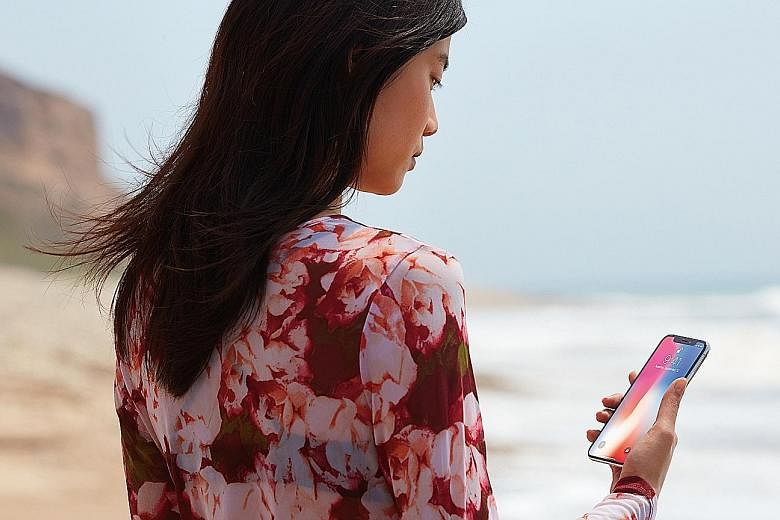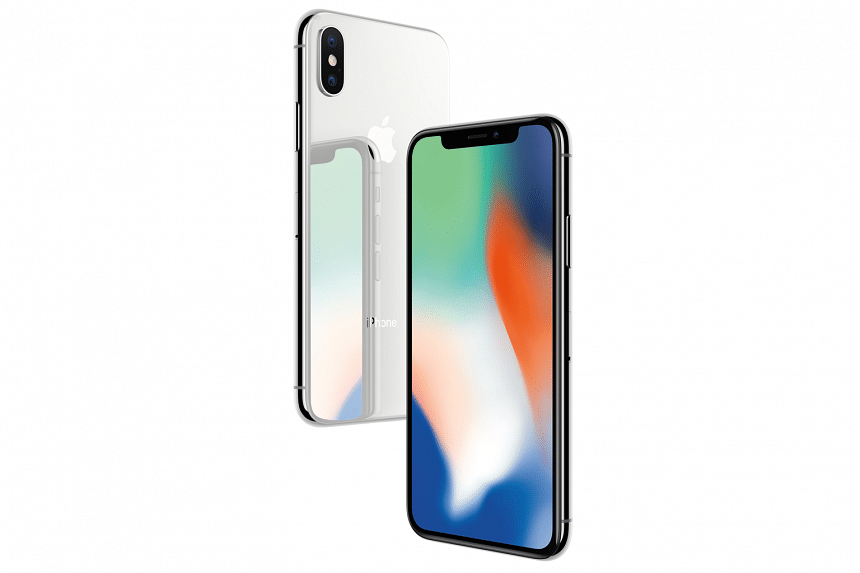The original Apple iPhone, launched 10 years ago, fundamentally changed the landscape of mobile phones and, consequently, how we use smartphones today.
I have used every iteration of the iPhone over the past decade. And I have been using the iPhone X for over a week.
Last week, I gave my impression of the phone after my first day of use, touching on the design, new Oled screen, Face ID (and the loss of the home button), Animojis and the heavily criticised screen "notch" (http://str.sg/4Fb8).
Throughout the week, I found myself constantly marvelling at the X's minimalist design and the premium feel of the glass front and back. I found that the glass back does not smudge as much as other glass-back smartphones.
The iPhone X supports wireless Qi charging and is resistant to water and dust. So, at least, you do not have to worry about accidentally dropping it into a swimming pool. Not that you are likely to drop it, as its relatively small size makes for better one-hand operation, and it fits easily in your trouser pocket.
I still don't find the "notch" - a term coined by the media to describe the black area at the top of the iPhone X's screen that houses the TrueDepth camera system - to be a downer. But you do lose screen space with that notch when playing some games or using some apps. Not ideal, but it is not a deal-breaker either.

-
TECH SPECS
-
PRICE: $1,648 (64GB), $1,888 (256GB)
PROCESSOR: A11 Bionic chip with 64-bit architecture with embedded M11 motion co-processor and neural engine
SCREEN: 5.8-inch Retina HD display with 3D Touch; 2,436 x 1,125 pixels
CAMERAS: 12-megapixel rear dual cameras (wide-angle f/1.8; telephoto f/2.4), TrueDepth Camera (7-megapixel front-facing camera f/2.2)
WEIGHT: 202g
-
RATING
-
FEATURES: 5/5
DESIGN: 5/5
PERFORMANCE: 5/5
BATTERY LIFE: 4/5
VALUE FOR MONEY: 4/5
OVERALL: 5/5
The super-sharp and gorgeous Oled screen more than makes up for the notch. Coined as Super Retina HD display, the 5.8-inch display has a resolution of 2,436 x 1,125 pixels. It supports high dynamic range (HDR), so you can see better details in shadow areas when viewing HDR-supported movies. Colours are displayed vividly with great contrast. I played the movie Wonder Woman and other HDR content, and they never looked as good on a smartphone as they did on the iPhone X.
And now to the question of how secure Face ID is - something a lot of my friends and colleagues want to know. Fret not, because like before, a passcode is still the security priority. It is like how when Touch ID first arrived, everyone was apprehensive about it. But now that it is gone, everyone wants it back.
It is amazing how well Face ID works. Initially, I thought I would have to wait for the unlock icon to be shown on-screen when I lift the iPhone X to my face, before I can swipe up from the display's bottom to get to the home screen.
However, as I used it more often, I realised I can just face the screen and swipe up. It will go to the home screen without any lag.
I also tested Face ID in different scenarios, like holding the phone at a lower position, in the dark and under bright sunlight, as well as with me wearing my polarised sunglasses, a cap or a scarf around my neck. And Face ID still worked.
In the past, you might accidentally activate Apple Pay when you double press the Home button. Not so anymore with iPhone X. Just double click the side button to activate Apple Pay, lift the phone to your face and tap to pay.
Thankfully, I don't have an evil twin who might fool Face ID. Also, I do not know if Face ID will continue to work should I grow thinner or fatter. But for now, Face ID exceeded my expectations; it worked so seamlessly that I found myself not missing the Home button much.
Perhaps the biggest challenge with the iPhone X is that you will need to re-learn all the familiar gestures. For example, to return home when using an app, you will need to swipe up from the display's bottom.
To access Control Centre, you swipe down from the top-right edge of the display. To look at notifications, swipe down from the display's top-left edge. For multi-tasking, swipe up from the display's bottom and pause at about mid-screen to activate the app switcher. But you will probably get used to these new gestures in no time.
In terms of operation speed, the X sits between the 8 and 8 Plus versions. In the GeekBench 4 benchmark tests I conducted, the iPhone X scored 4,200 (single-core) and 10,144 (multi-core). This is marginally faster than the iPhone 8 (4,194 for single-core; 10,122 for multi-core) and slightly slower than the iPhone 8 Plus (4,226 for single-core; 10,383 for multi-core).
In real-life usage, I did not experience much difference in the iPhone X performance compared with the iPhone 8 Plus. Graphics-intensive games, such as The Machines AR, Warhammer 40K: Freeblade, Implosion and Infinity Blade 3, played smoothly without any lag. And yes, if, like me, you are still playing Pokemon Go, catching Entei during raids with iPhone X never felt smoother.
The iPhone X has a nearly identical dual-lens (wide and telephoto) camera system as the iPhone 8 Plus. But for its 2x telephoto lens, it has a slightly bigger aperture of f/2.4, against iPhone 8 Plus' f/2.8. With a bigger aperture, it lets more light enter the image sensor.
Photos taken of the same scene in bright sunlight using the iPhone 8 Plus and iPhone X yielded similar quality, whether using the wide-angle or telephoto lens. But for night scenes, I found the details with the iPhone X to be much sharper than those with the iPhone 8 Plus.
In addition, the TrueDepth camera system enables Portrait Mode selfies with different lighting effects. The two Stage Light modes still need serious tweaking. With this effect, you get a plain dark background behind the face. But at times, small fragments of the real background can be seen around the edges of the subject. At other times, the dark hue from the background would seep into the face.
As usual, I looped a 720p video at full brightness, full volume and with Wi-Fi on, to stress-test the battery. The iPhone X lasted 8hr 40min, compared with the iPhone 8's 6hr 40min and the 8 Plus' 7hr 20min. However, real-life battery life will depend on usage habits.
For me, with the iPhone X's brightness level set at 50 per cent, and with usage involving regular checks of Facebook and Instagram updates, as well as reading and replying to WhatsApp and Telegram messages, the iPhone X can comfortably last a working day. Unless you are also playing Pokemon Go.
• Verdict: The Apple iPhone X is undoubtedly the best iPhone yet, with gorgeous edge-to-edge Oled display, reliable Face ID, great handling, superb camera and fast operation. But it is also undoubtedly expensive. Are you willing to pay?



